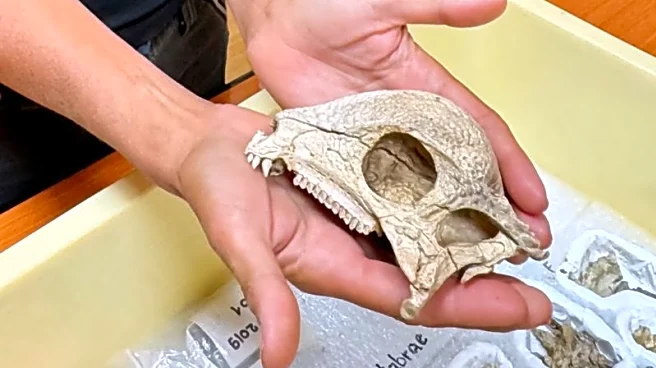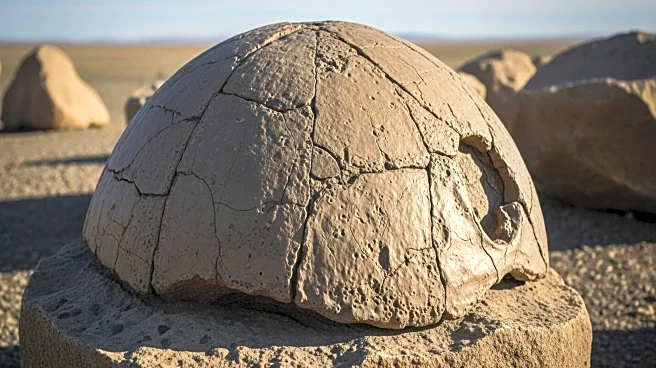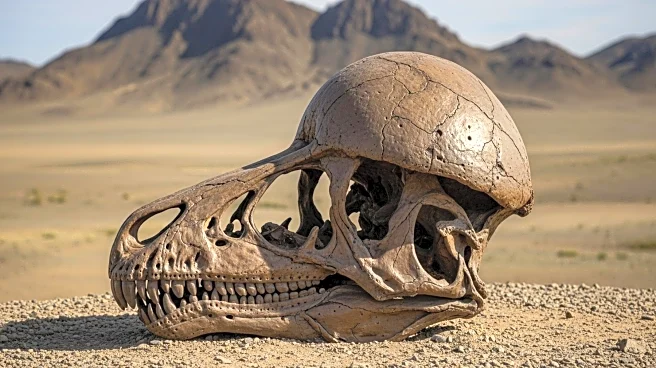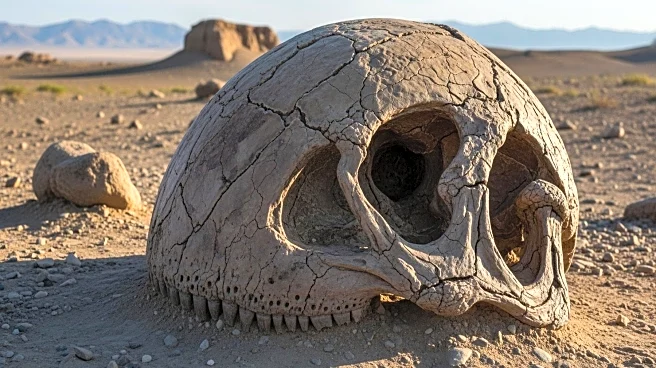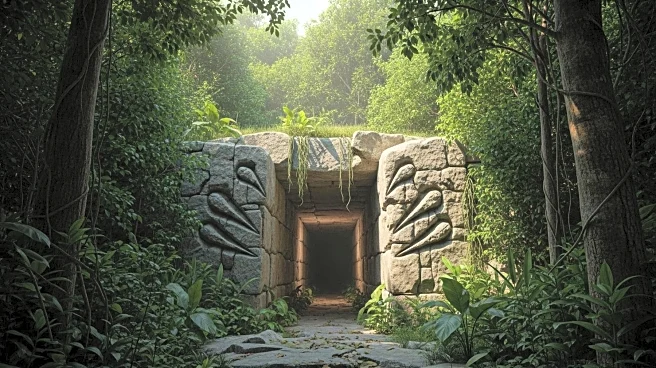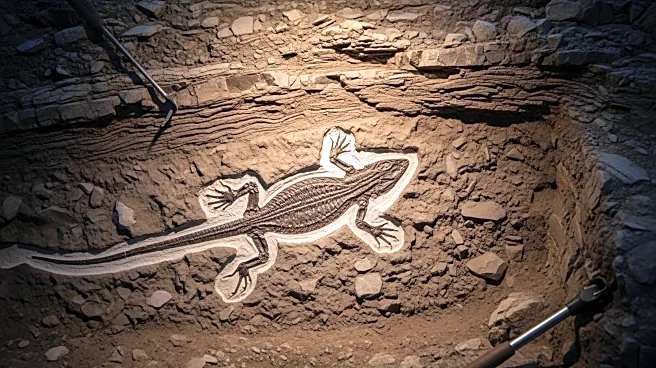What's Happening?
Scientists in Mongolia have discovered the oldest and most complete fossil of a pachycephalosaur, a dinosaur known for its dome-shaped skull. The fossil, dating back between 108 and 115 million years, belongs to a juvenile of a previously unknown species named Zavacephale rinpoche. This discovery was made in the Khuren Dukh formation in the Gobi Desert by a team led by paleontologist Tsogtbaatar Chinzorig. The fossil is significant as it is about 15 million years older than previously found specimens, providing new insights into the evolution of these dinosaurs. The completeness of the fossil offers detailed information about the anatomy of pachycephalosaurs, which were two-legged herbivores that lived during the Cretaceous Period.
Why It's Important?
The discovery of this fossil is crucial for understanding the evolutionary history of pachycephalosaurs, a group of dinosaurs that have intrigued scientists due to their unique skull structures. The fossil's age and completeness provide valuable data on how these dinosaurs evolved over time. This finding also contributes to the broader understanding of dinosaur evolution and diversity during the Cretaceous Period. The research could potentially lead to new insights into the ecological roles these dinosaurs played and how they adapted to their environments.

